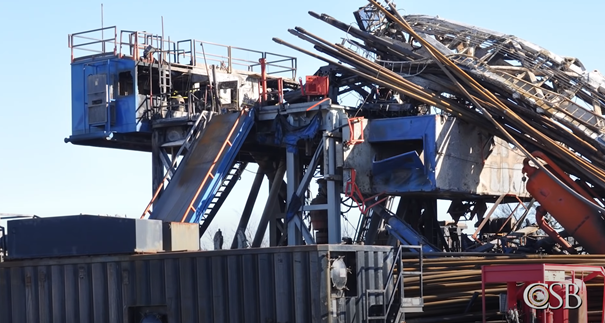The Weekly Reflektion 34/2021
The Pryor Trust blowout in 2018 in Oklahoma, USA, killed 5 people. These deaths could and should have been prevented. What can we learn from this Major Accident?

Why did the operator’s duty of care and the regulations not help prevent the blowout?
On January 22nd, 2018, a blowout and rig fire at a Pryor Trust gas well in Oklahoma, USA, killed 5 rig workers trapped in the driller’s cabin on the rig floor. The chain of events leading to the blowout were described in a previous Reflektion.
Last week’s Reflektion addressed the behaviour of the operational team, and this week we shall address the role of the operator and the regulator in the blowout. The operator was an investment company with six employees. In many countries, an operator has to demonstrate that they have an organisation with the necessary competence to perform or to purchase services to perform the operation safely. In the case of the Pryor Trust operation, there were no federal regulations governing the safety of onshore drilling operations, and there is no federal body overseeing safety in onshore drilling operations. The requirements for offshore drilling operations do not apply to land drilling.
At a state level, Oklahoma has a patchwork of individual laws that govern drilling operations, none of them focused on safety. The Oklahoma laws instead stress the maximisation of production, and the elimination of loss of hydrocarbons. This, of course, leaves safety issues to the operator and the drilling contractor. The degree of focus on safety that an investment company with six employees would have particularly if the regulations do not demand it, is questionable. The drilling contractor will often focus on what the operator wishes to focus on.
The recommendations from the US Chemical Safety Board investigation included applying the federal regulations for offshore drilling to onshore drilling operations, or alternatively developing a new set of onshore requirements. The need for a ‘Well Control Interface Document’ focusing on barriers, and what should be done to maintain these barriers, and bridging the safety management systems of the operator and the drilling contractor was specially highlighted. An alarm system for each different activity such as drilling and tripping, with pre-defined critical alarms activated, and non-critical inhibited was also recommended to be developed.
It was recommended that a set of requirements on the design and location of the drillers cabin, covering the evacuation of personnel during potential major accident scenarios should be prepared.
It seems strange that the requirements and standards are in place for offshore drilling operations do not apply to land-based operations. Five people lost their lives due to this inconsistency, where the operator’s and the drilling contractor’s duty of care failed, where safety did not receive the necessary priority.
When considering your role as an operator or contractor, do you satisfy the regulatory requirements? Are these requirements adequate to address safety? What more could you do to improve the safety for the people involved in your operations?
